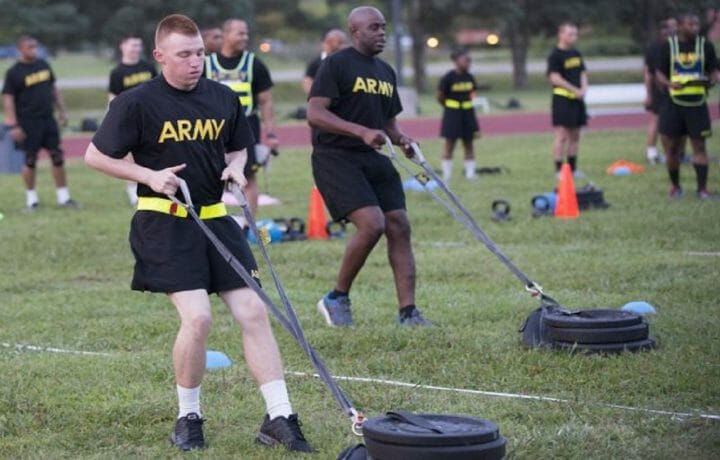While some had their eye on stimulus checks with the most recent defense bill that fought its way through the legislative and executive branches, others were tracking next steps with the Army Combat Fitness Test (ACFT). While many have argued back and forth about the switch to the ACFT, Congress has its eye on ensuring that the fitness test is fair for all locations. Additionally, Congress wants to ensure that the ACFT does not negatively impact retention and recruitment. The military needs are varied, and its fitness test should reflect that.
“Combat is age and gender-neutral,” said Maj. Gen. Lonnie Hibbard, commanding general of the Army’s Center for Initial Military Training (CIMT), which designed the new test. “And so regardless of your gender or, more importantly, your [military profession], we have to ensure that everybody is prepared for combat.”
Defense Bill Provisions for ACFT Implementation
While October 1, 2020 made the ACFT the Army’s official physical test, scores aren’t slated to count until March 2022. Despite the slow rollout, the recent legislation emphasizes the importance of feedback and looking at a change from multiple angles. Congress is requiring the Secretary of the Army to use a study that’s conducted by an “entity independent of the Department of Defense.” The independent study will weigh in on whether or not the ACFT adversely impacts “members of the Army stationed or deployed to climates or areas with conditions that make prohibitive the conduct of outdoor physical training on a frequent or sustained basis.” Additionally, the study will determine “the extent, if any, to which the test would affect recruitment and retention in critical support military occupational specialties of the Army, such as medical personnel.” If feedback is positive, then the ACFT can proceed as planned.
Do LEg Tucks Equal Combat Readiness?
Despite COVID-19 and community pushback, the Army has continued to proceed with implementation by slowing down rollout plans, as well as offering the option to do a plank instead of a leg tuck. While ACFT advocates say that the test is more in line with combat needs, pushback over training equipment and a level playing field that attracts diverse candidates continues to keep the issue resurfacing. Add all of those concerns to the fact that promotions get linked to performance, and you have a recipe for a range of responses.
While the Army’s decision to slow roll implementation is a good one, an independent study is even more helpful to make sure that the right test is in place – especially when conversations about diversity are on the table. Changes to the ACFT plans can potentially signal that leadership is either listening or tone deaf. It is important to have a fair and balanced test. The problem lies in the multiple interpretations of what’s fair and balanced. If a leg tuck truly is the key to combat readiness, then by all means, keep it as a qualifier. But if it’s not, the concern that linking certain exercises to scores, promotions, and job opportunities is understandable.




